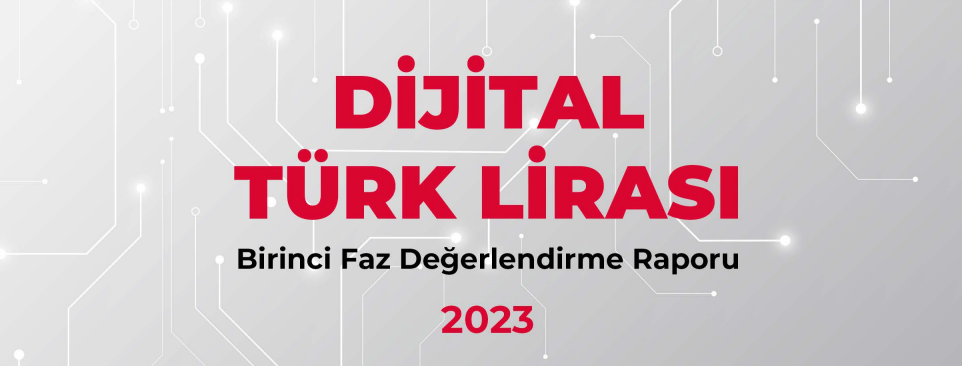Countries around the world are continuing their efforts to develop digital fiat currencies, and Turkey has joined the race. Following research and development efforts that began in 2020, the Central Bank of the Republic of Turkey has published a report addressing the current status. This report contains a wealth of information, from definitions to ongoing work.
Digital Turkish Lira
After the initiation of studies in 2020, the “Digital Currency Proof of Concept Study” was completed in 2021, and the project moved to the next phase. The year 2021, when technology partners were also determined, represents the period when the first significant concrete steps were taken. Last year, in 2022, Phase-1 and the first pilot test processes were initiated. This year, the Central Bank announced the completion of Phase-1 and is now focusing on Phase-2 studies. The agenda for 2024 will be Phase-2.

According to the report, following the conducted studies, it was decided to expand the Digital Turkish Lira Collaboration Platform with new participants. The report also indicates that in addition to technical work, different preparations related to the digital Turkish lira will be made.
“The Central Bank of Turkey continues its efforts to be fully prepared for the launch of the digital Turkish lira. In the coming periods, in addition to the technological requirements of the digital Turkish lira, priority will be given to studies on its economic and legal framework, and the results of these studies are planned to be presented to decision-makers.”
The scope of Phase-1 is summarized with the following points;
- Preparation of the technical working environment for the Digital Turkish Lira System
- Preparation of infrastructure for testing the Digital Turkish Lira System
- Establishment of a distributed ledger platform for the Digital Turkish Lira System
- Design and development of smart contracts and applications that will work with the distributed ledger platform
- Integration of the prototype digital identity system with the Digital Turkish Lira System
- Design and development of the digital wallet application necessary for digital Turkish lira transactions
- Conducting simulations and tests of issuance, distribution, online payment/transfer, and redemption scenarios for the digital Turkish lira
- Conducting cybersecurity studies
- Execution of pilot test processes
- Measurement of system performance and user experience
Digital TL and Its Principles
We also hear objections from around the world regarding blockchain-based digital fiat currency (CBDC). In the US, some politicians and even Presidential Candidates have called for a ban on such initiatives. The underlying concerns of all these apprehensions include privacy and the risk of constant surveillance.
However, the Central Bank of Turkey indicates in its report that it is aware of these concerns and emphasizes sensitivity to the following issues;
- Privacy: Users’ digital privacy should be protected, and data privacy in financial transactions should be maximized. Personal information should be shared only with legally determined parties and only as necessary. Cryptographic solutions that enhance data privacy are used in the systems. Moreover, it is considered that including a design that ensures visibility separation, where not every actor can access all information or make sense of it alone, will provide a more reliable solution than using cryptographic solutions alone.
- Technological and Architectural Flexibility
- Interoperability
- Do No Harm: The system should not harm economic and financial processes. It should not aim to compete with existing financial products and services.
- Financial Intermediary Institution Independence: Users should be able to register with the system through any licensed financial intermediary institution, and registered users should be able to access the system through a different licensed financial intermediary institution with their authority.
Conclusion
Independent of the studies conducted with platform participants, within the scope of R&D activities carried out within the Central Bank, research, development, and testing activities were carried out on topics such as interoperability across different networks and technologies, wholesale payments system on distributed ledger platforms, applications that protect data privacy, high-performance architectural designs, comparison of programmable payment methods, and innovative use cases.
There will be a total of 3 phases, and the first one has been completed. Important pilot tests will be conducted at every stage, from usage scenarios to system performance measurement. The requirements targeted for Phase-2 are listed in the Central Bank report as follows;
- Intermediary Institution Integrations
- Smart Payments
- Offline Payments
- Hardware Wallets
- Interoperability
- High Performance
- Legal and Economic Dimensions
Phase-3 will include many details from the regulations to be made if it is decided to be put into circulation, to the certification and licensing process.

 Türkçe
Türkçe Español
Español









